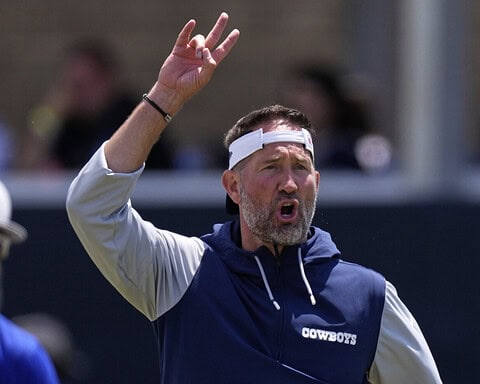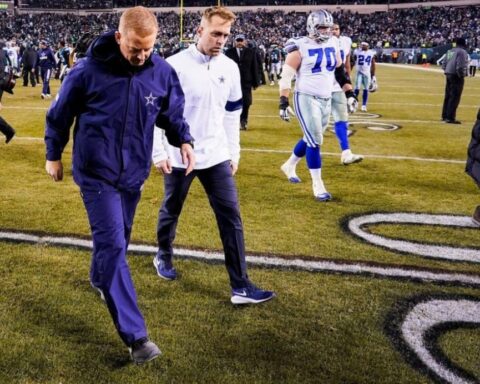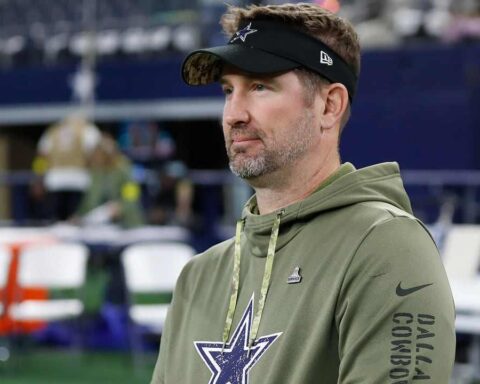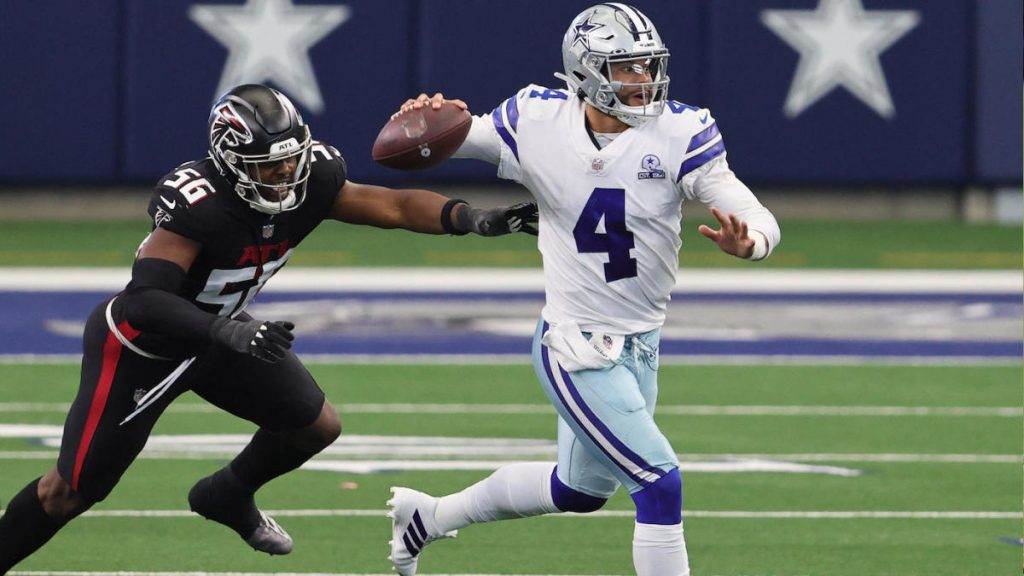The Dallas Cowboys are undergoing significant change after moving on from Head Coach Jason Garrett and bringing in Mike McCarthy. Most of the coaching staff looks different. However, a few things will remain the same, including the offensive coordinator position, in which Kellen Moore will remain in charge. Not only that, McCarthy has said the second-year coordinator will remain the Cowboys’ play-caller going forward.
This raises a lot of questions, one of which was answered by McCarthy at the same time. The West Coast system, which he has used throughout his career, will be implemented to the Cowboys’ offense. But wait, the language will not change in Dallas. Instead, it’ll be Mike who will change languages to adapt.
“This is the first language change that I’ve had to go through since 1989” said McCarthy.
The fact that the language Kellen Moore and the Cowboys have been using will not change speaks volumes on McCarthy’s belief in his offensive coordinator. It’s actually great news. But I know some of you are wondering…
What the hell do they even mean with language?
Obviously, they won’t be calling the plays in Spanish or in French. So let me explain, in 101 fashion, what language means in football. For purposes of this article, we will be talking strictly offense.
There are various offensive schemes in football. But after all, they all use similar concepts. It’s not like West Coast offenses use routes that Air Coryell offenses don’t. They do, however, call them differently and differ in overall philosophy.
In the West Coast, which was popularized by none other than Bill Walsh, a route is called by name. Pat Kirwan writes about complicated verbiage in his book “Take Your Eye Off The Ball 2.0” and mentions how a play named “I Weak Right X Fly Y Stop Z Curl Fullback Free” in the West Coast can “paralyze a young quarterback.”
Quarterbacks have to call the play in the huddle, break it, have their offenses lined up and read the defense before even snapping the ball. When you’re dealing with that nomenclature, it’s not hard to imagine there will be trouble at times.
In comes legendary coach Don Coryell in the 60’s and creates the route tree. Instead of calling every route by its name in the huddle, why not assign each a number in the tree to make it more visual for the players? Keep in mind, Coryell coached in San Diego State when he started using this concept, and he heavily relied on junior college players. He needed them to learn quickly.
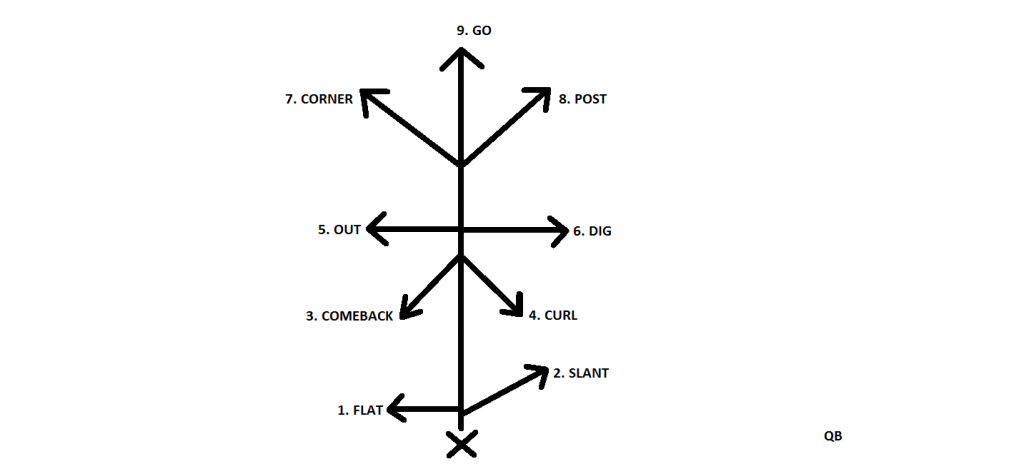
There are many versions of the route tree out there, but the idea is simple. When calling a play, you use the numbers to tell each receiver what they’ll be running. “928 Tailback Swing” the quarterback might say. The X receiver knows he’s in a go route, the tight end runs a slant and the Z runs a post.
Since Garrett was in Dallas as the offensive coordinator, he implemented the Coryell offense.
“To me, there was so much simplicity in the way it’s taught and the way it’s learned. And that goes back to the three-digit system of digitizing the routes. Putting the whole passing game together is just a matter of putting the numbers together. It all flows so naturally.” Says Garrett on Tim Layden’s book Blood, Sweat and Chalk.
A lot of success stories in the NFL are derived from Coryell. Today, virtually all teams have incorporated this style of offense to their playbook. It might be in their play-calling style or in route concepts, but it’s all over the league.
In a nutshell, that’s what we’re talking about when discussing language in football. The Dallas Cowboys have a young core of football players, including QB Dak Prescott. Not changing the offense’s language is a smart and mature move by Mike McCarthy. Specially when considering Dak Prescott is going to be working with another quarterback coach, his fourth in his so-far short career.
Kellen Moore did a good job debuting as an offensive coordinator last season and it’s great to see McCarthy putting his trust on him to lead this team to the next step.




